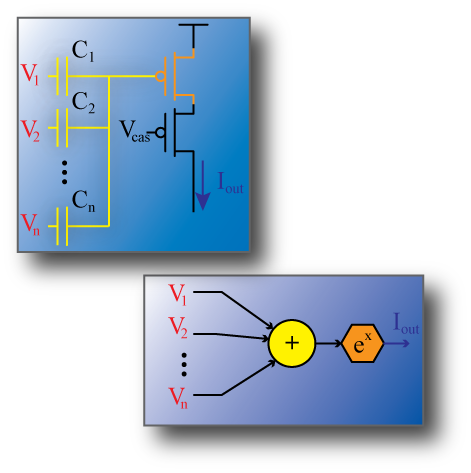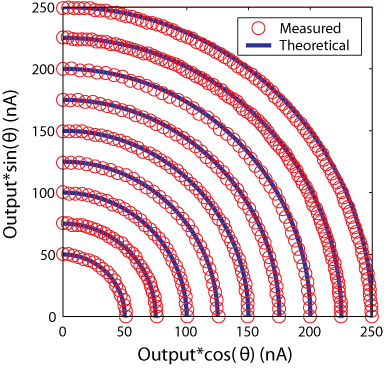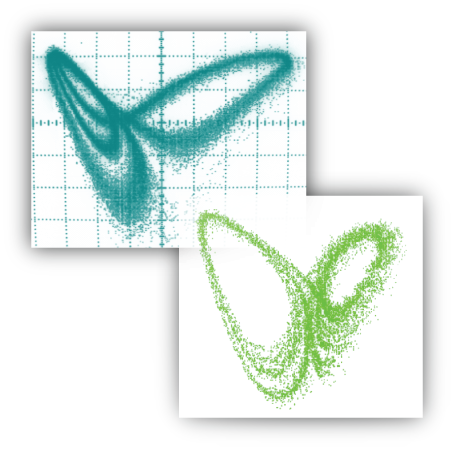Research :: Synthesis of Multiple Input Translinear Element (MITE) Networks and Implementaions Using Reconfigurable Architectures
With the introduction of the floating-gate transistor into reconfigurable architectures, great advances have been made in the field. Recently, Hall et. al. have proposed the first truly large-scale field programmable analog array (FPAA). As an outgrowth of this work, a new class of FPAAs based on translinear elements has begun to be developed. The use of translinear elements, multiple input translinear elements (MITEs) specifically, allows for extreme versatility in the functions implemented by the system while keeping the computational elements of the FPAA regular. In addition, synthesis procedures have been developed for translinear elements. This facilitates the implementation of large-scale systems on the FPAA because the circuit design can be extracted using the synthesis procedures based on equations entered by the user.
Initial reconfigurable architectures used fine grain reconfigurability, every gate capacitor and the drain of each MITE could be connected arbitrarily, in order to create reconfigurable MITE networks. Circuits including a squaring circuit, a square root circuit, a translinear loop, a vector magnitude circuit, and a 1st-order log-domain filter were implemented using this architecture and results have been presented. Following proposed, and constructed architectures used a mix of fine and medium granularity in order to simplify the implementation of larger systems.
|
|
Figure 1: A basic MITE can be constructed
as a multiple capacitive input floating gate transistor in subthreshold current operation. Its
functional behavior is an eponentiation of a summation. This
basic building block allows the implementation of a variety of
complicated systems and equations. |
Why are MITEs useful?
We'll lets look at a basic expression with a multiplication and a division:  . Now, the
same expression can be written as
. Now, the
same expression can be written as  , which uses the operations of exponentiation,
logarithm, addition and subtraction. MITEs elegantly allow all these operations (the logarithm is implemented by using feedback) in a versatile but regular structure.
, which uses the operations of exponentiation,
logarithm, addition and subtraction. MITEs elegantly allow all these operations (the logarithm is implemented by using feedback) in a versatile but regular structure.
|
|
Figure 2: Data from a reconfigurable mite array which was programmed to perform a vector magnitude operation on a two component input.
In blue we see contours of constant distance from the origin.
The system was provided various inputs that correspond to magnitudes that should fall on the contours.
The magnitudes computed by the circuit are shown in red. |
|
|
Figure 3:
Data from a MITE implementation of the Lorenz system, built by lab member
Kofi Odame, while with Bradley Minch at Cornell University. This exemplifies the possiblites of complex behaviors achievable with MITEs.
|
References
[1]
back to Key Technologies



 . Now, the
same expression can be written as
. Now, the
same expression can be written as  , which uses the operations of exponentiation,
logarithm, addition and subtraction. MITEs elegantly allow all these operations (the logarithm is implemented by using feedback) in a versatile but regular structure.
, which uses the operations of exponentiation,
logarithm, addition and subtraction. MITEs elegantly allow all these operations (the logarithm is implemented by using feedback) in a versatile but regular structure.

